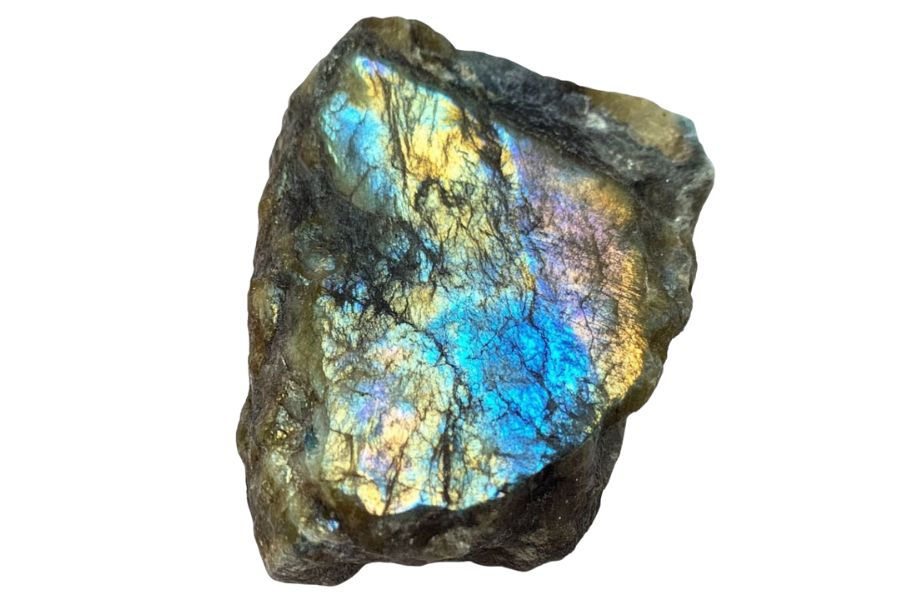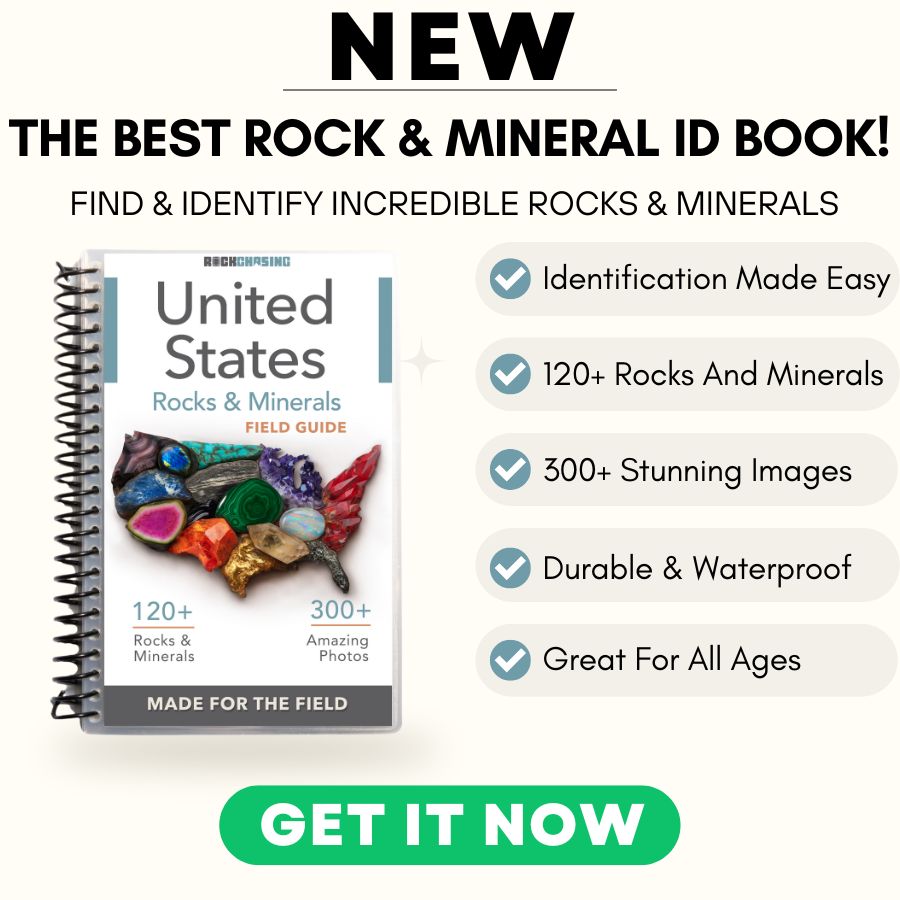If you’re into rocks and minerals, labradorite is a pretty cool find. Many collectors can find this special stone across Washington.
Looking for labradorite takes some work, but can be worth it. You might need to dig through stream beds or check out old mining areas. Some folks bring home amazing specimens after just a day of searching.
We can help you find spots where others have had luck before. Even beginners can find something nice with the right information.
No need to be an expert! Just grab some basic gear and follow the tips here to start your own collection.
How Labradorite Forms Here
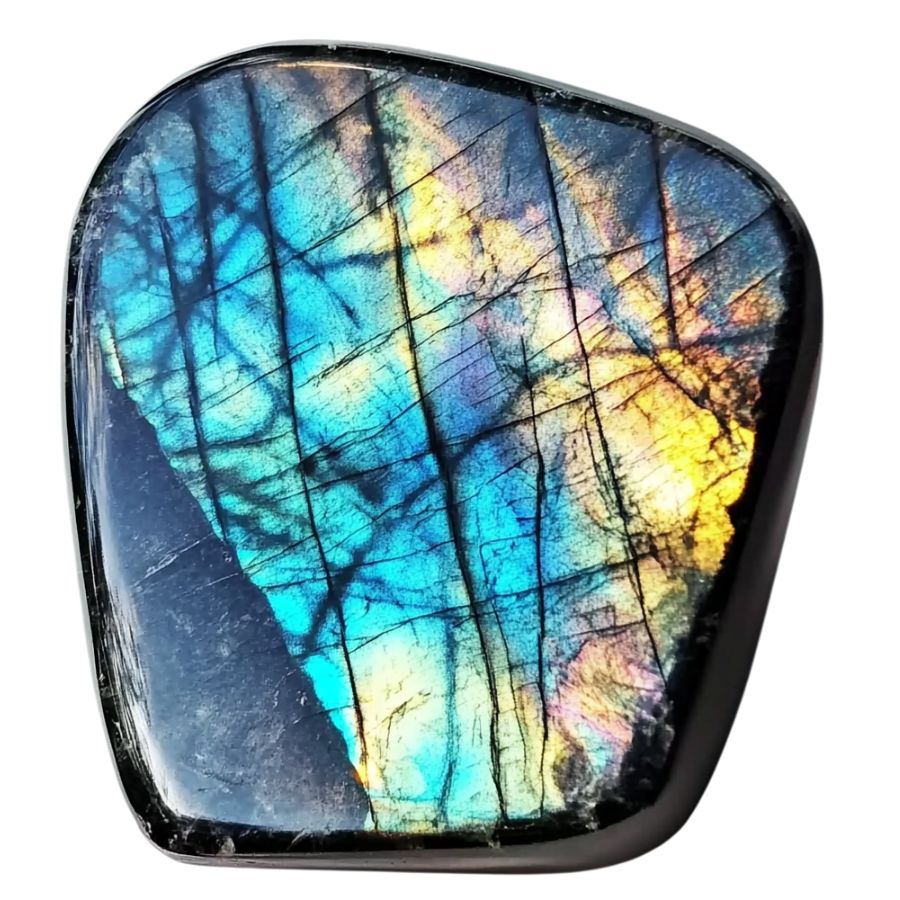
Labradorite forms deep underground when magma slowly cools and crystallizes. The process happens when different minerals separate while cooling, creating thin layers stacked on top of each other. These layers have slightly different chemical makeups, usually about 1 micron thick.
When light hits these layers, it creates that stunning blue-green flash we love, called labradorescence. The stone starts out as a mix of calcium, sodium, aluminum, and silicate minerals.
As it cools, these minerals organize themselves into this layered pattern, which happens most often in places where magma intrudes into the surrounding rock. It’s like nature’s own light show, frozen in stone.
Types of Labradorite
Labradorite comes in several distinct varieties. Each type exhibits special qualities that make it sought after by collectors.
Blue Labradorite
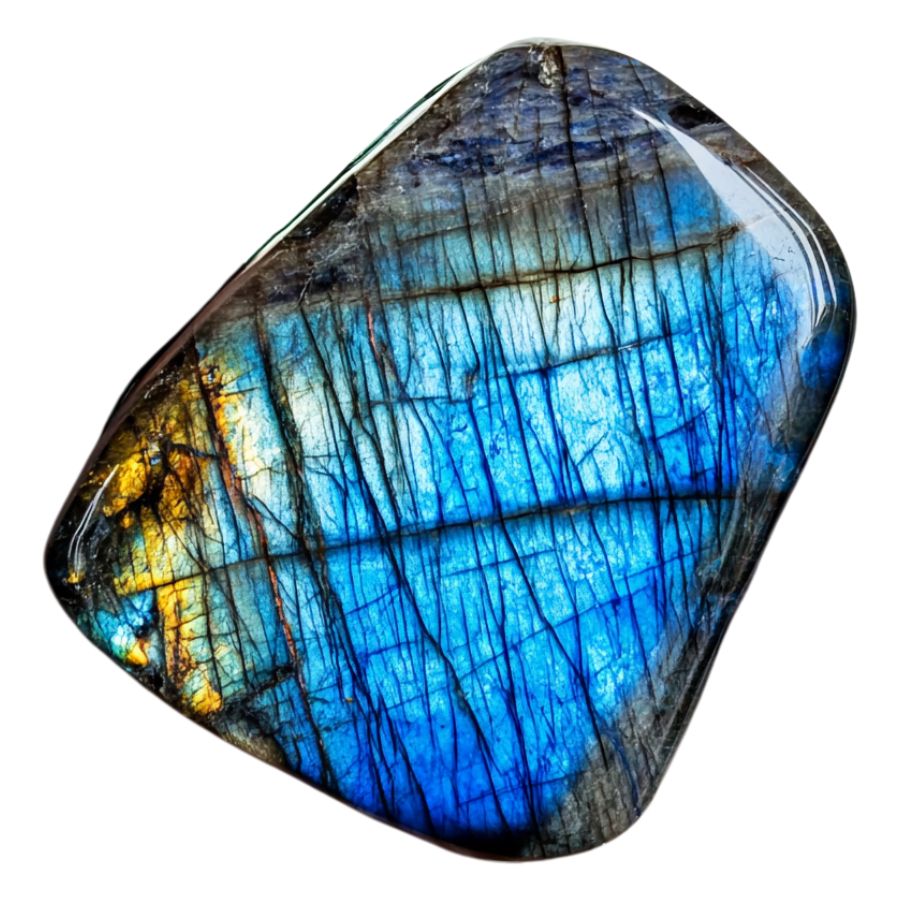
Blue Labradorite stands out for its remarkable blue iridescence against a dark gray or black background. When light hits the stone’s surface, it creates a stunning display of electric blue flashes, sometimes accompanied by hints of green or violet.
The blue flashes appear most vivid when viewing the stone from specific angles, creating an almost magical transformation as you rotate it. This effect is often compared to the ethereal beauty of the Northern Lights.
Exceptional specimens display an intense, electric blue flash that covers a large portion of the stone’s surface. Some pieces also show secondary colors like aqua or sea green, adding depth to their visual appeal. The contrast between the dark base and bright blue flashes makes each piece unique.
Golden Labradorite

Golden Labradorite displays a mesmerizing golden-yellow sheen that sets it apart from other varieties. The stone’s surface exhibits brilliant flashes of gold and amber, creating a warm, sun-like glow that seems to emanate from within. These golden rays often appear alongside subtle hints of green or champagne colors.
What makes Golden Labradorite special is its ability to display multiple golden hues simultaneously. Some specimens show a range of colors from pale yellow to deep amber, creating a multi-dimensional effect.
The golden flash can vary in intensity and coverage, with premium specimens showing broad, bright areas of gold schiller.
Rainbow Moonstone
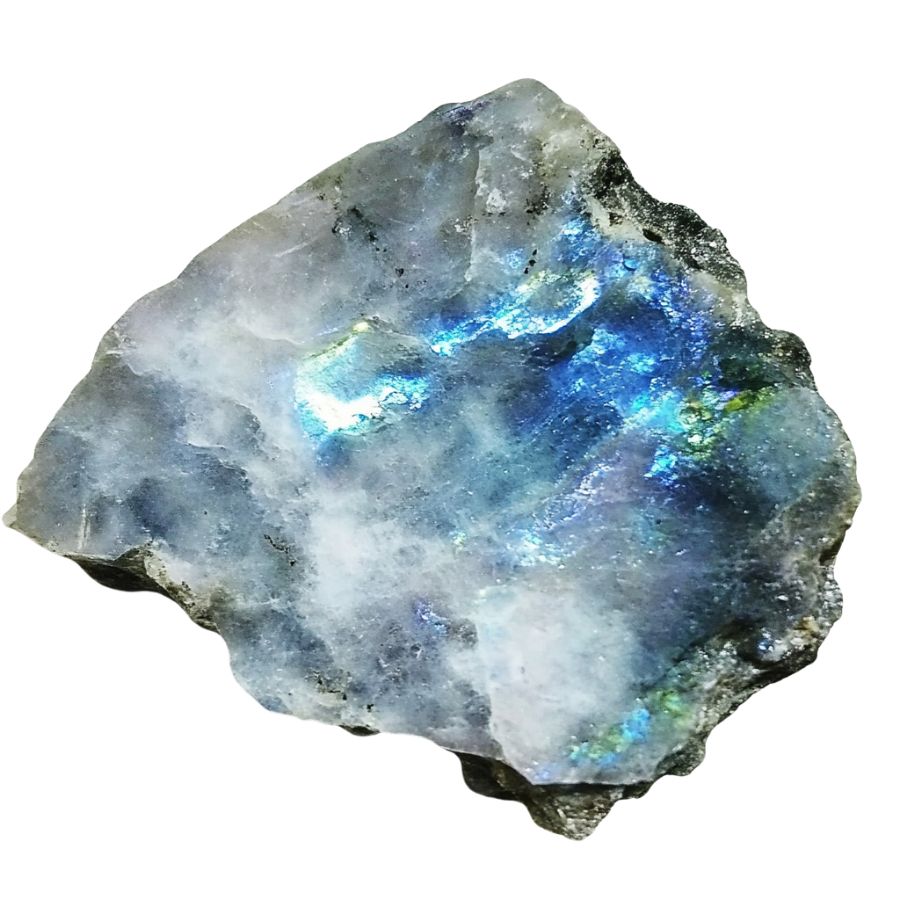
Rainbow Moonstone Labradorite exhibits a distinctive white or colorless base with an enchanting blue sheen that floats across its surface. Blue sheen is often accompanied by flashes of other colors, including pink, yellow, and green.
This stone’s most captivating feature is how its colors appear to float just beneath the surface, creating an almost three-dimensional effect. As light moves across the stone, these colors shift and change, revealing new patterns and combinations. This creates a dynamic display that seems to change with every movement.
The stone’s transparency can range from translucent to semi-transparent, with the most valued pieces showing excellent clarity beneath their shimmering surface.
Spectrolite
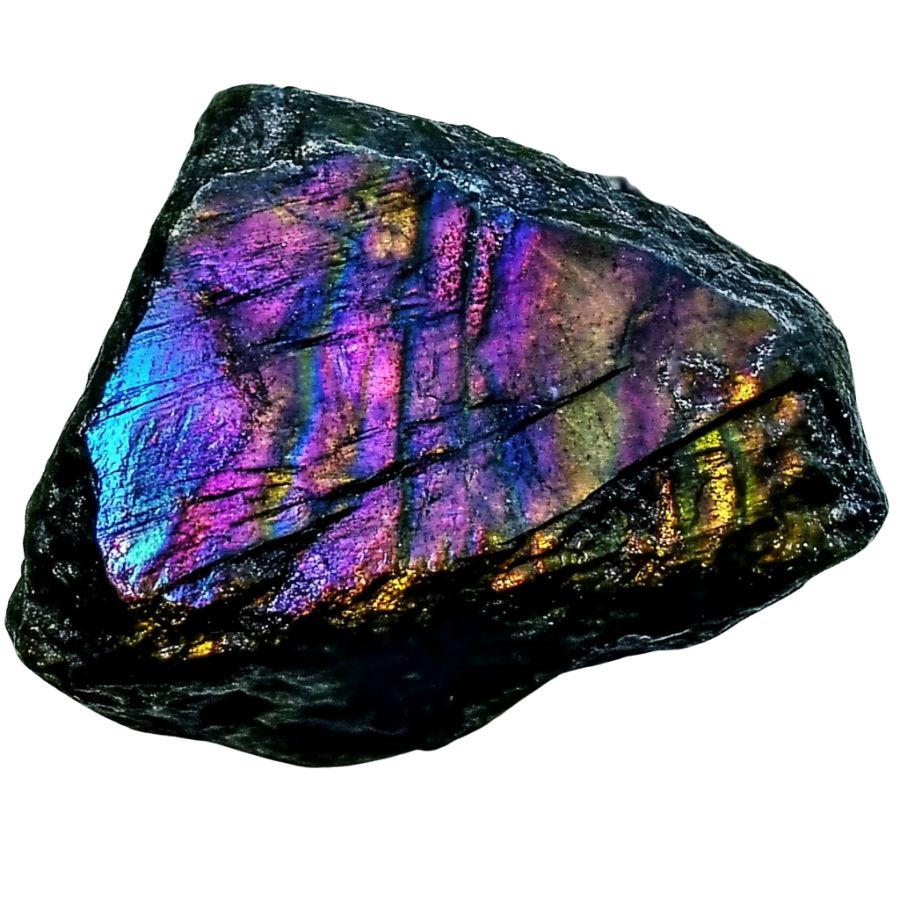
Spectrolite reigns as the most dramatic member of this stone family, with its distinctive jet-black base setting it apart from other varieties.
What makes it truly special is that premium specimens can simultaneously display the complete spectrum of colors, from deep indigo to bright orange, emerald green to royal purple, all in a single piece.
The finest specimens possess what experts call “full-face color,” meaning the vibrant display covers most of the stone’s surface rather than appearing in small patches.
This characteristic, combined with its remarkable color intensity, has earned Spectrolite its reputation as the most visually impressive variety of all similar stones.
Transparent Labradorite
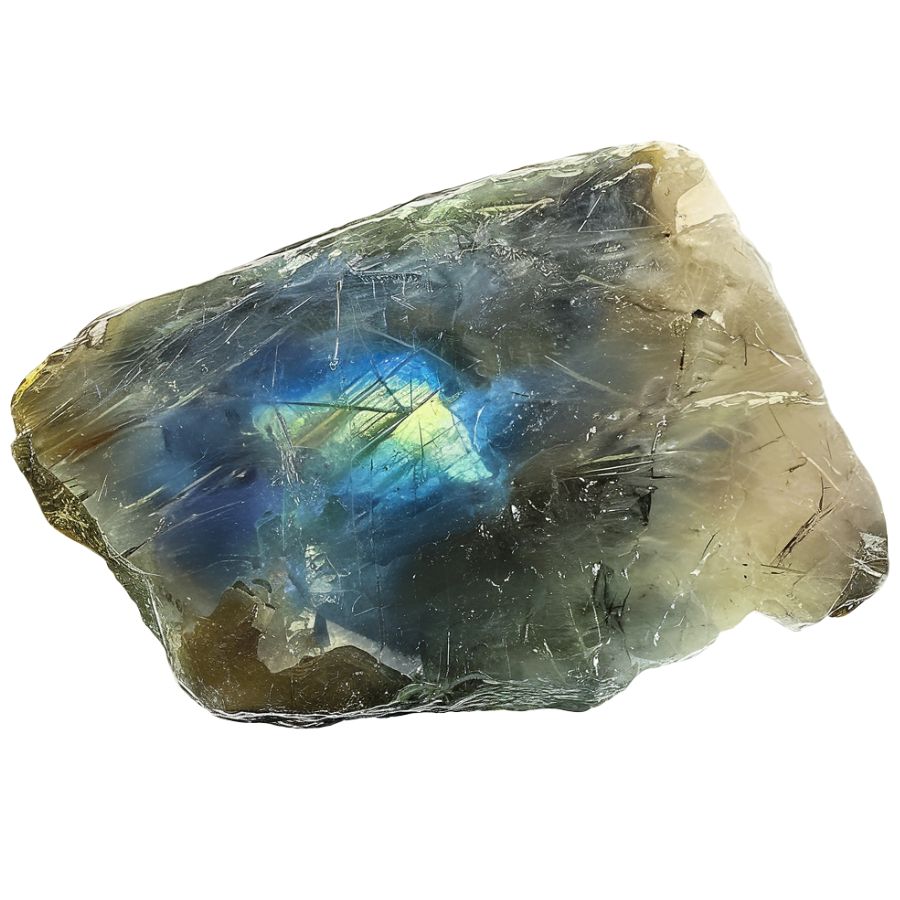
Transparent Labradorite exhibits a remarkable clarity that separates it from its opaque cousins. Crystal-clear areas allow light to pass through, creating an exceptional display of blue flashes against the transparent background.
Natural specimens often show areas of both transparency and translucency. Beautiful color changes occur as you move this stone, with the transparent areas revealing subtle blue sheens that seem to float within the crystal.
Some pieces display additional colors like soft greens or pale yellows, though the blue flash remains dominant.
Remarkable clarity combines with the signature color play to create stones that appear almost liquid-like.
Andesine-Labradorite
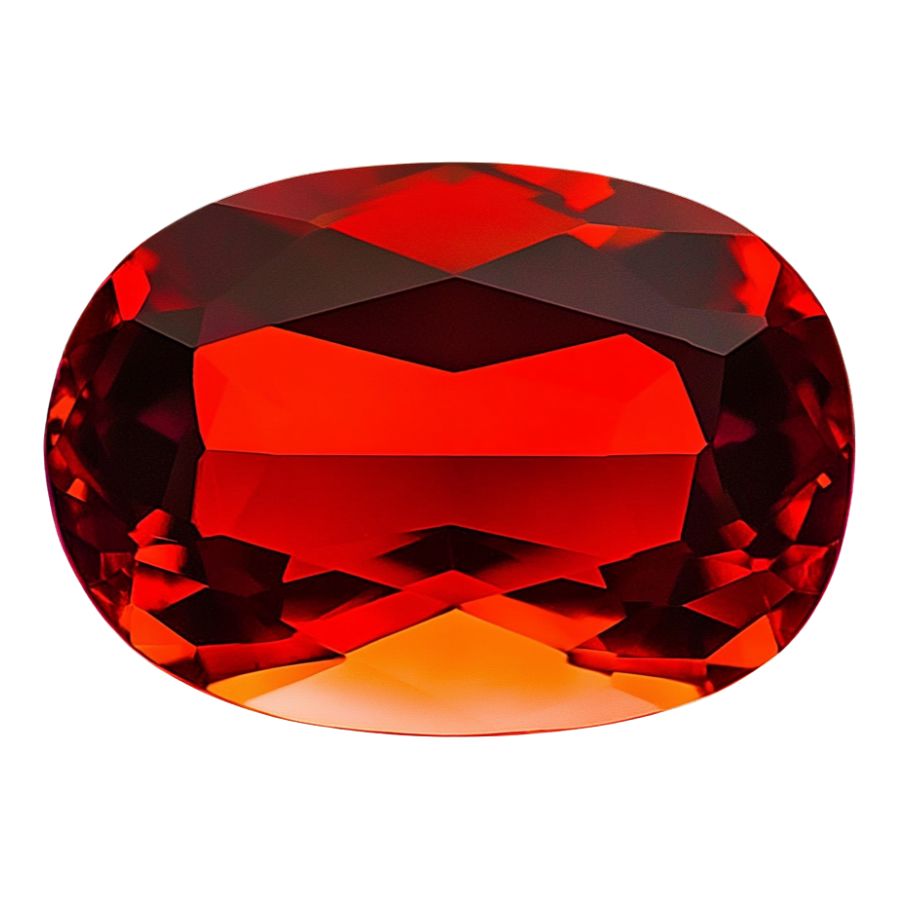
Reddish-orange hues dominate Andesine-Labradorite’s appearance, creating a warm and inviting glow. Delicate green and yellow streaks often appear throughout the stone, adding complexity to its color palette.
Metallic sparkles dance across the surface, different from the typical labradorescent effect. Fresh discoveries of this relatively new gemstone continue to reveal new color combinations.
Striking color variations appear in high-quality pieces, ranging from deep red to bright orange. Many specimens show subtle color zoning, where different hues blend together in distinct patterns.
Black Labradorite
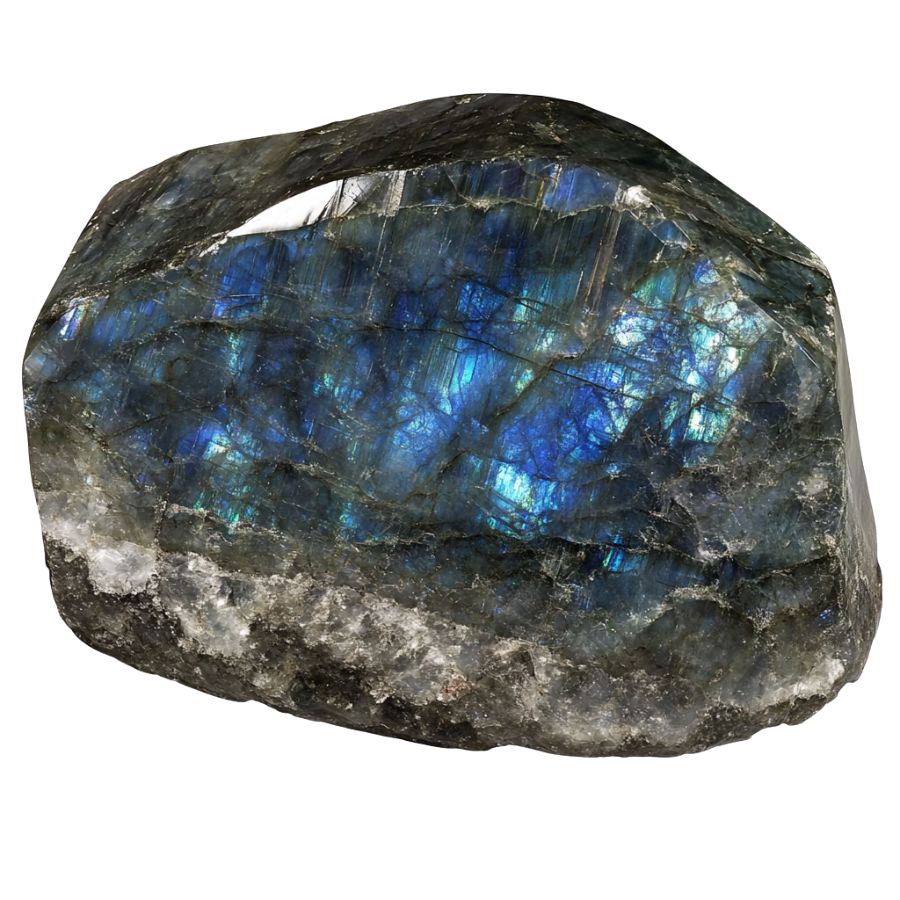
Black Labradorite presents a dramatic dark canvas that emphasizes its colorful display. Bright flashes of color stand out dramatically against the deep black background, creating stunning visual contrast.
Most specimens show multiple colors at once, creating an eye-catching display. These color displays often include electric blues, emerald greens, and golden yellows, all visible simultaneously.
Natural sunlight brings out the boldest displays, while artificial light can highlight subtle color variations. Some specimens also show interesting patterns in how the colors are distributed.
Brown Labradorite

Brown Labradorite features rich earth tones ranging from deep chocolate to warm amber. Peach and orange undertones often appear throughout the stone, creating depth and dimension.
Multiple color zones create interesting patterns within each stone. These patterns can include stripes, swirls, or mottled areas that combine different brown and orange hues.
Subtle iridescence sometimes appears on the surface, adding an unexpected shimmer to the earthy colors. This effect is more subdued than in other varieties but adds an interesting dimension to the stone’s appearance.
If you want REAL results finding incredible rocks and minerals you need one of these 👇👇👇
Finding the coolest rocks in isn’t luck, it's knowing what to look for. Thousands of your fellow rock hunters are already carrying Rock Chasing field guides. Maybe it's time you joined the community.
Lightweight, mud-proof, and packed with clear photos, it’s become the go-to tool for anyone interested discovering what’s hidden under our red dirt and what they've already found.
Join them, and make your next rockhounding trip actually pay off.
What makes it different:
- 📍 Find and identify 140 incredible crystals, rocks, gemstones, minerals, and geodes across the USA
- 🚙 Field-tested across America's rivers, ranchlands, mountains, and roadcuts
- 📘 Heavy duty laminated pages resist dust, sweat, and water
- 🧠 Zero fluff — just clear visuals and straight-to-the-point info
- ⭐ Rated 4.8★ by real collectors who actually use it in the field
What Rough Labradorite Looks Like
Labradorite in its rough form can be tricky to spot, but once you know what to look for, it becomes easier. Here’s how to recognize this fascinating stone in its natural state.
Look for the Signature Flash
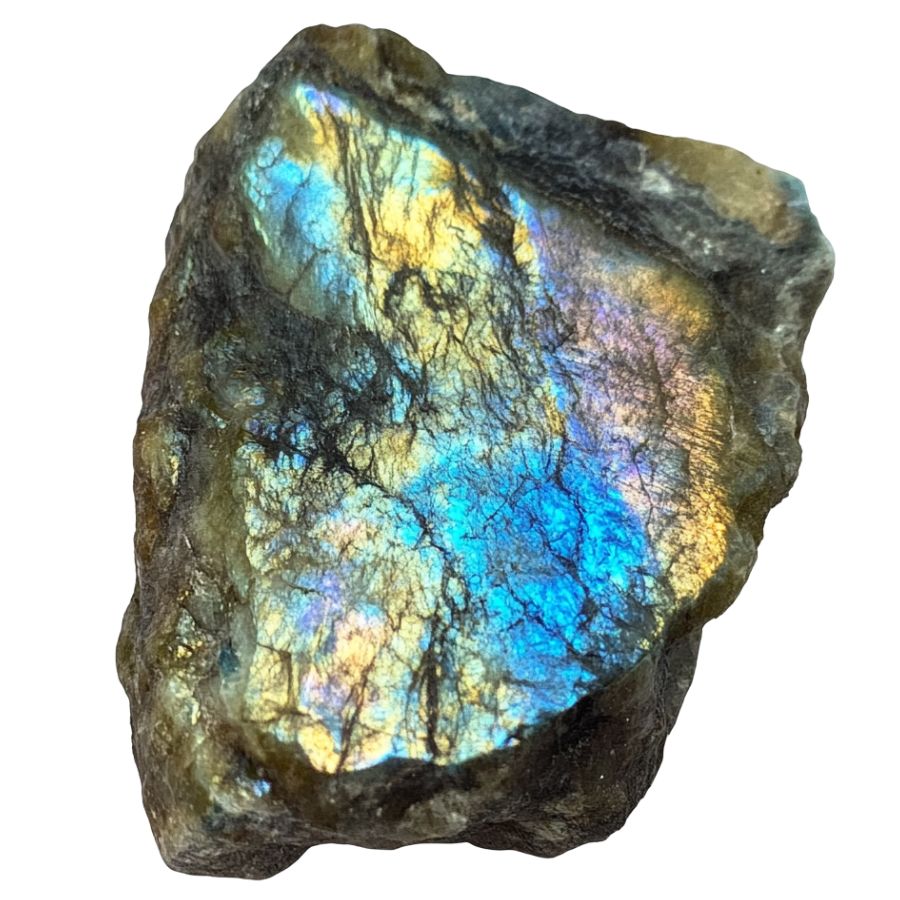
Raw labradorite often shows patches of its famous iridescent flash, even when unpolished. Check dark gray or black areas under direct sunlight – you might catch glimpses of blue, green, or gold shimmer.
Sometimes, you’ll need to wet the surface slightly to see this effect better. The flash isn’t always obvious but usually appears as scattered patches.
Check the Base Color and Texture
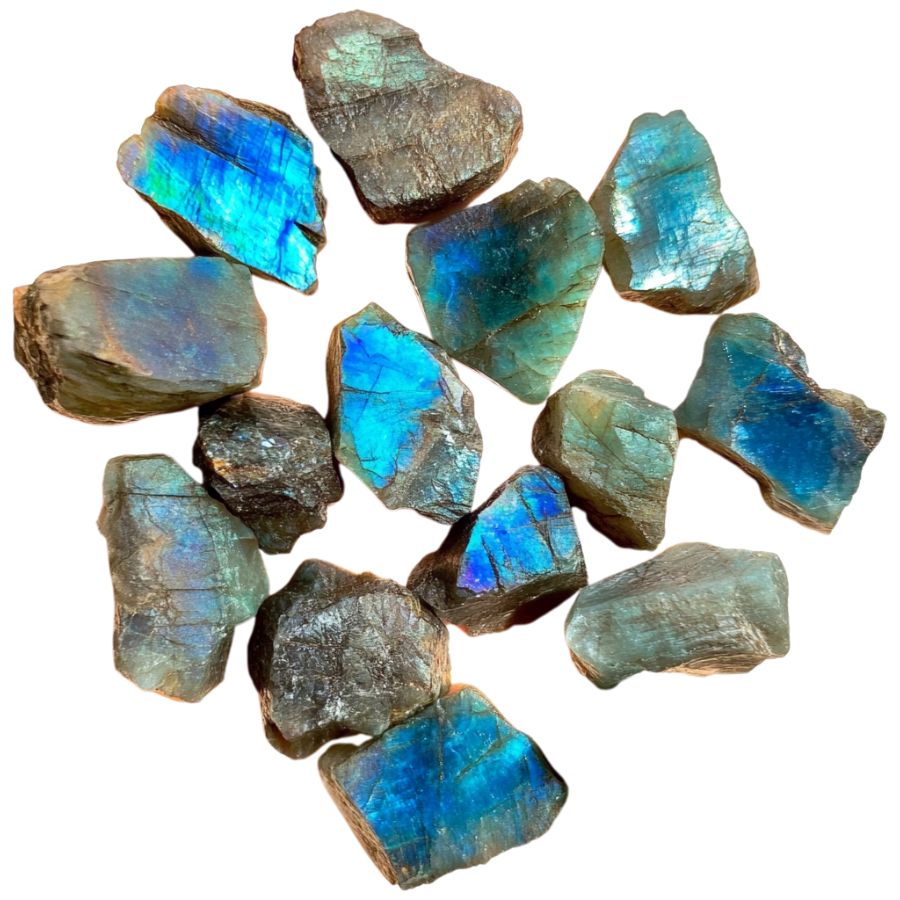
The main body should be dark gray to black, sometimes with a slight greenish tinge. The surface feels smooth but not glossy, similar to unpolished glass.
Look for a slightly bumpy texture with occasional flat surfaces. Fresh breaks will show a more uniform color than weathered surfaces.
Assess the Hardness and Breakage
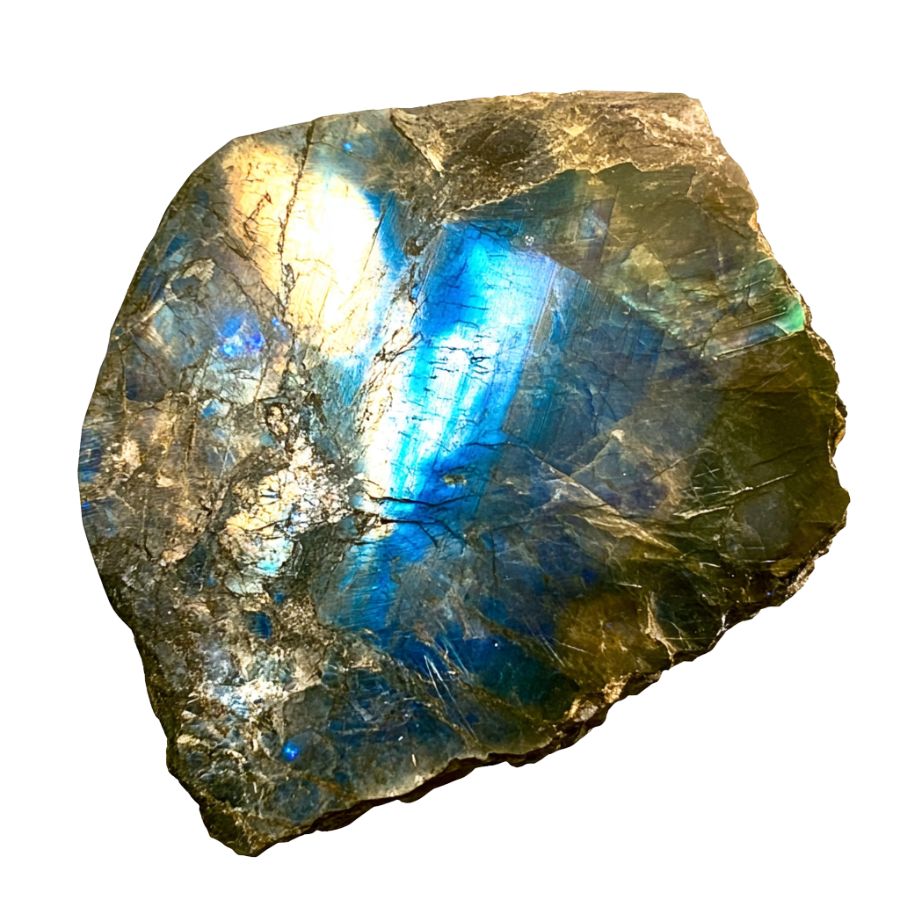
Try scratching the surface with a copper penny – it shouldn’t leave a mark. The stone often breaks with smooth, flat surfaces at distinct angles.
You’ll notice these angular breaks are pretty characteristic, unlike random rough breaks in common rocks.
Test the Translucency

Hold a thin edge up to strong light. Raw labradorite should show some translucency, appearing slightly cloudy rather than completely opaque. The edges might look slightly whitish or gray when light passes through. Thicker pieces will appear darker and more opaque.
A Quick Request About Collecting
Always Confirm Access and Collection Rules!
Before heading out to any of the locations on our list you need to confirm access requirements and collection rules for both public and private locations directly with the location. We haven’t personally verified every location and the access requirements and collection rules often change without notice.
Many of the locations we mention will not allow collecting but are still great places for those who love to find beautiful rocks and minerals in the wild without keeping them. We also can’t guarantee you will find anything in these locations since they are constantly changing.
Always get updated information directly from the source ahead of time to ensure responsible rockhounding. If you want even more current options it’s always a good idea to contact local rock and mineral clubs and groups
Tips on Where to Look
Labradorite isn’t super common in everyday places, but with some smart searching, you can find it. Here’s where you should look:
Metamorphic Rock Formations
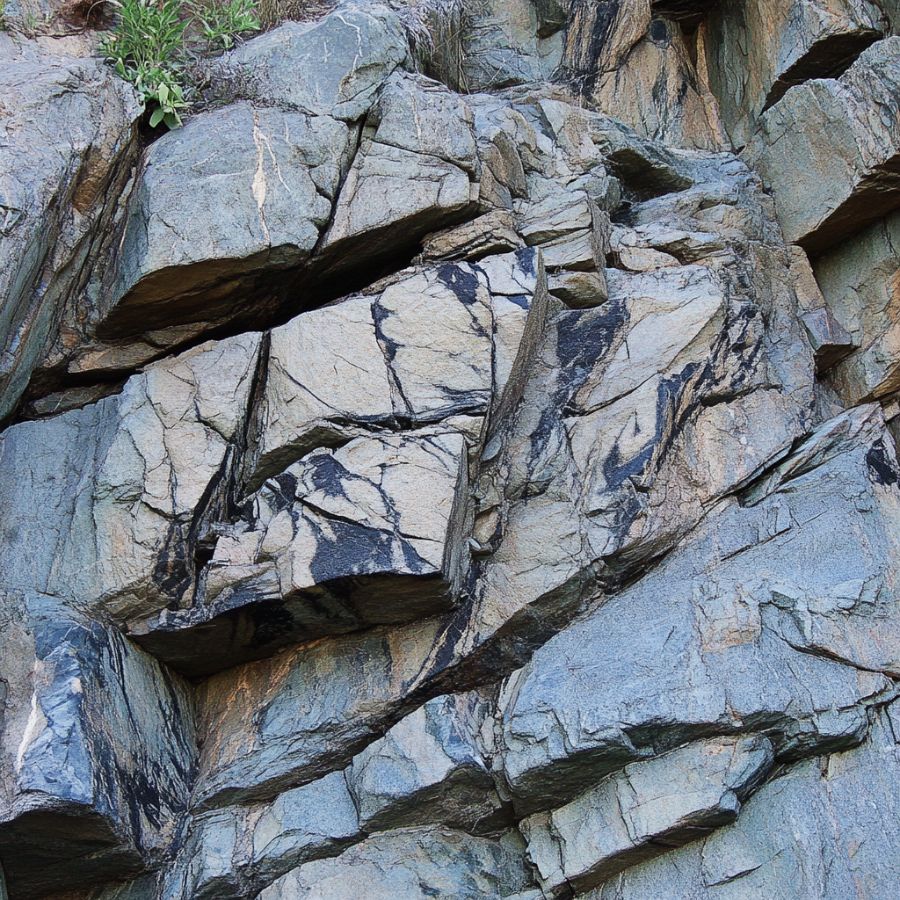
Look for dark-colored rock outcrops. Spot areas with lots of feldspar minerals. Check exposed cliff faces. Sometimes, when the sun hits just right, you might catch that signature blue flash from larger formations that’s a dead giveaway for labradorite presence.
Glacial Deposits
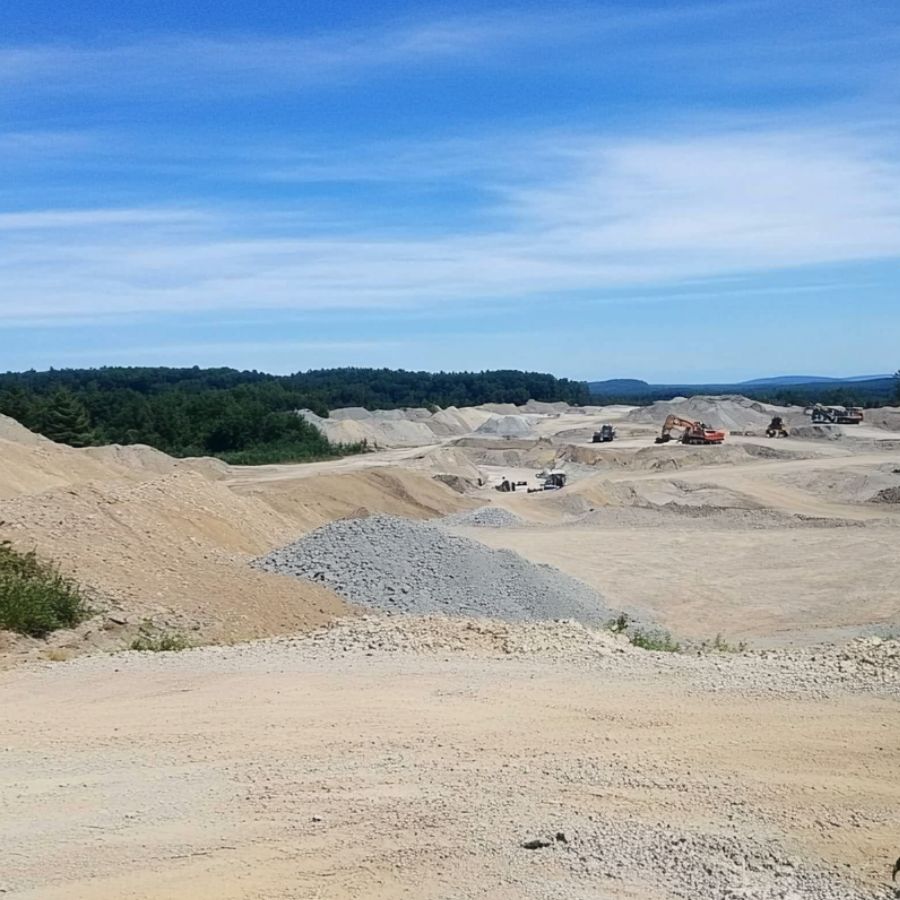
Search river beds after glacial deposits. Check gravel pits near old glacial paths. Look for smooth, dark gray stones mixed with other rocks. These deposits often contain chunks of labradorite that have broken off from larger formations and been carried downstream over thousands of years.
Mining Tailings
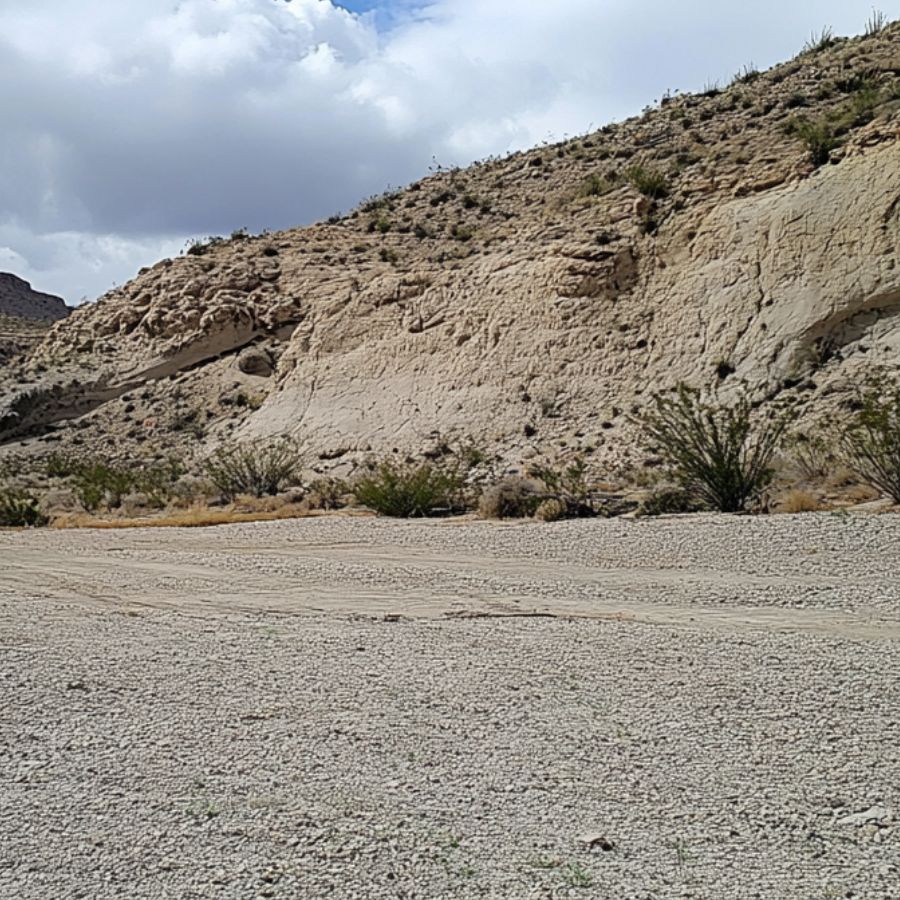
Visit abandoned feldspar mines. Check mine dump areas. Dig through tailings piles. Look for flat, shiny surfaces. The waste rock from old mining operations often contains overlooked pieces of labradorite that weren’t considered valuable during active mining periods but are perfect for collectors.
Stream Beds

Search clear-water streams. Look under water-worn rocks. Check gravel bars after rain. Spot dark, plate-like stones. The constant water movement often exposes and polishes these stones, making them easier to identify when wet.
Some Great Places To Start
Here are some of the better places in the state to start looking for Labradorite:
Always Confirm Access and Collection Rules!
Before heading out to any of the locations on our list you need to confirm access requirements and collection rules for both public and private locations directly with the location. We haven’t personally verified every location and the access requirements and collection rules often change without notice.
Many of the locations we mention will not allow collecting but are still great places for those who love to find beautiful rocks and minerals in the wild without keeping them. We also can’t guarantee you will find anything in these locations since they are constantly changing.
Always get updated information directly from the source ahead of time to ensure responsible rockhounding. If you want even more current options it’s always a good idea to contact local rock and mineral clubs and groups
Springdale Mining District
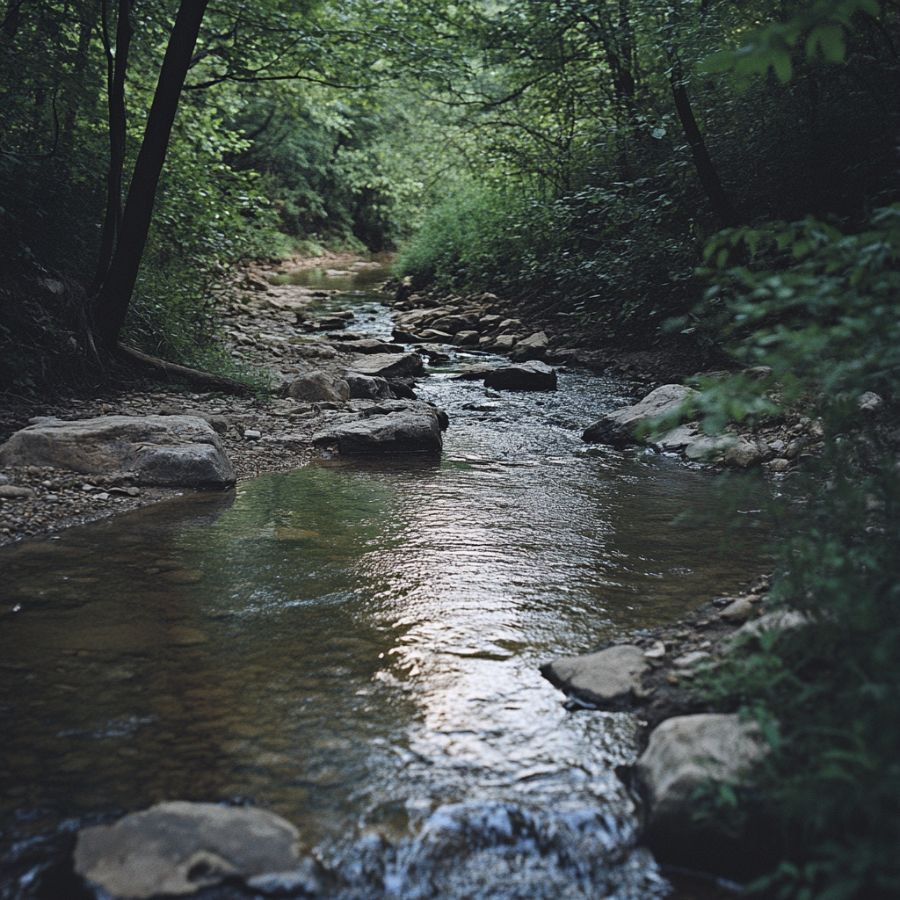
The Springdale Mining District is located in Stevens County. This area has a rich mining history and boasts diverse mineral deposits, including labradorite.
The district features metamorphosed sedimentary rocks from the Proterozoic age. These include phyllite, quartzite, and dolomite, which have transformed over millions of years, creating perfect conditions for mineral formation.
Explore the Cleveland mine area, about nine miles east of Hunters. Look specifically in the Stensgar Dolomite formation, where labradorite crystals sometimes hide within the dolomite bands. The mine’s open pits and tailings piles often yield good specimens too.
Another good spot is around the unnamed tributary of Hunters Creek, near the Lower level of the Cleveland mine. This location has exposed new material over time, increasing your chances of finding labradorite.
Red Top Mountain

Red Top Mountain rises 5,151 feet in Kittitas County, in the Cascade Range. Visitors can reach this popular rockhounding spot via Blue Creek Road near State Route 97, close to Blewett Pass.
Famous for its ancient Eocene Teanaway Basalts, Red Top Mountain offers rockhounds a treasure trove of minerals. These volcanic rocks formed millions of years ago, creating perfect conditions for gemstone formation.
Collectors often discover the best Labradorite samples along road cuts on Blue Creek Road leading to the collection parking area. Many successful hunters search the exposed rock layers on slopes where basalt formations are visible.
Besides Labradorite, the area yields other impressive finds, including chalcedony, amethyst quartz, and calcite geodes.
Hansen Creek
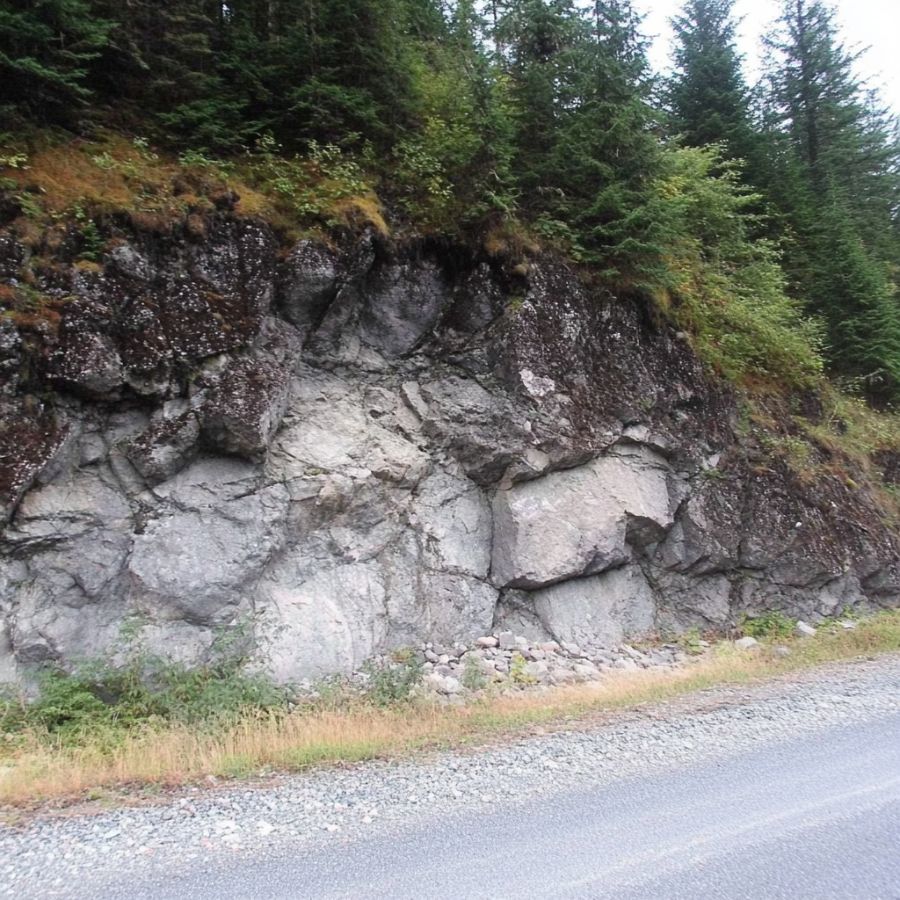
Hansen Creek is a popular spot for rockhounds in King County. Located in the Snoqualmie Mining District within the Cascade Mountains, this area offers great opportunities for mineral collectors.
This location is famous for its variety of minerals, especially quartz crystals and amethyst scepters. Labradorite can also be found here among the many mineral treasures. The special rock formations at Hansen Creek, including intrusive breccias and granodiorite, create perfect conditions for these minerals to form.
Focus on the Humpback Mountain Slump Zone. This specific area has exposed bedrock and slump zones where high-quality specimens are more likely to be discovered. Many rockhounds dig through these areas to find hidden gems.
Weather conditions can change quickly in the mountains, so it’s best to visit during the summer months when access is easier and collecting conditions are optimal.
Racehorse Creek
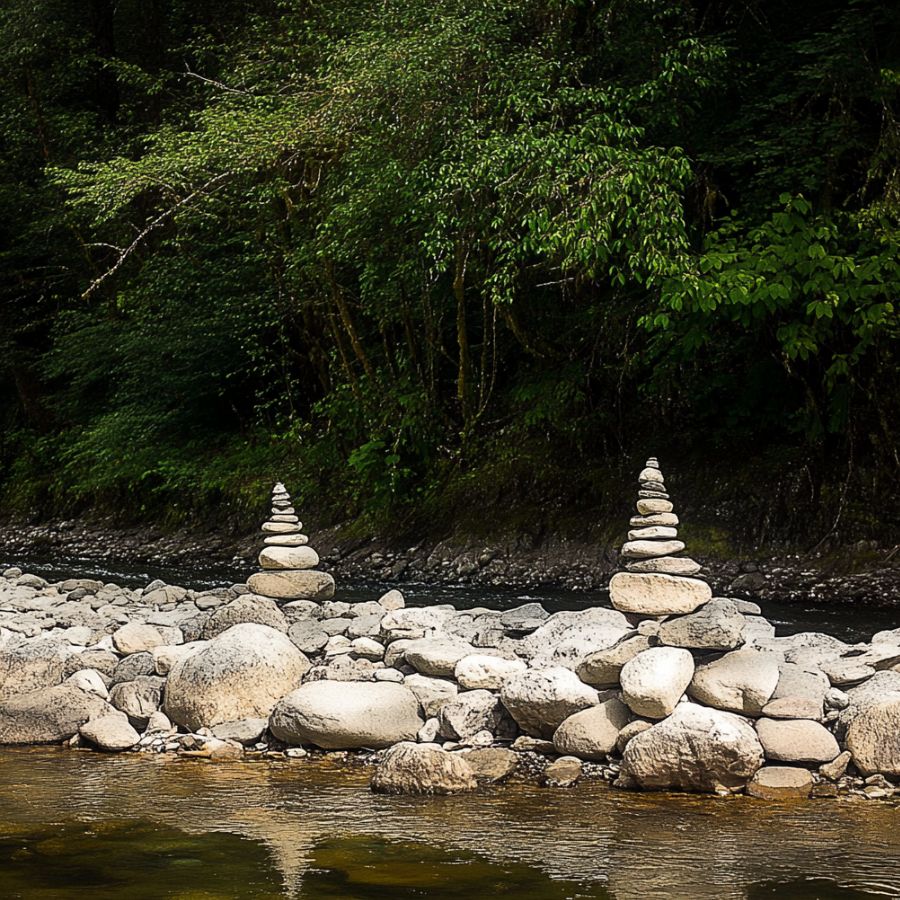
Racehorse Creek flows near Deming in Whatcom County. The creek features beautiful Racehorse Falls, a waterfall with multiple layers, and sits close to Slide Mountain. This area belongs to the Chuckanut Formation, rocks that formed 34 to 56 million years ago.
The Chuckanut Formation makes Racehorse Creek special for rock hunters. Its folded sedimentary rock layers and sandstone beds contain many fossils. Natural events like landslides have exposed interesting rock formations over time.
Check areas where creek waters have uncovered rock layers. The 2009 landslide site offers particularly good hunting grounds since it revealed fresh sandstone beds.
Look in the creek bed and examine exposed rock faces along the water’s edge. Many collectors wade through shallow parts of the creek with simple tools to search for the colorful gemstone among the stream gravels.
Ocean Shores
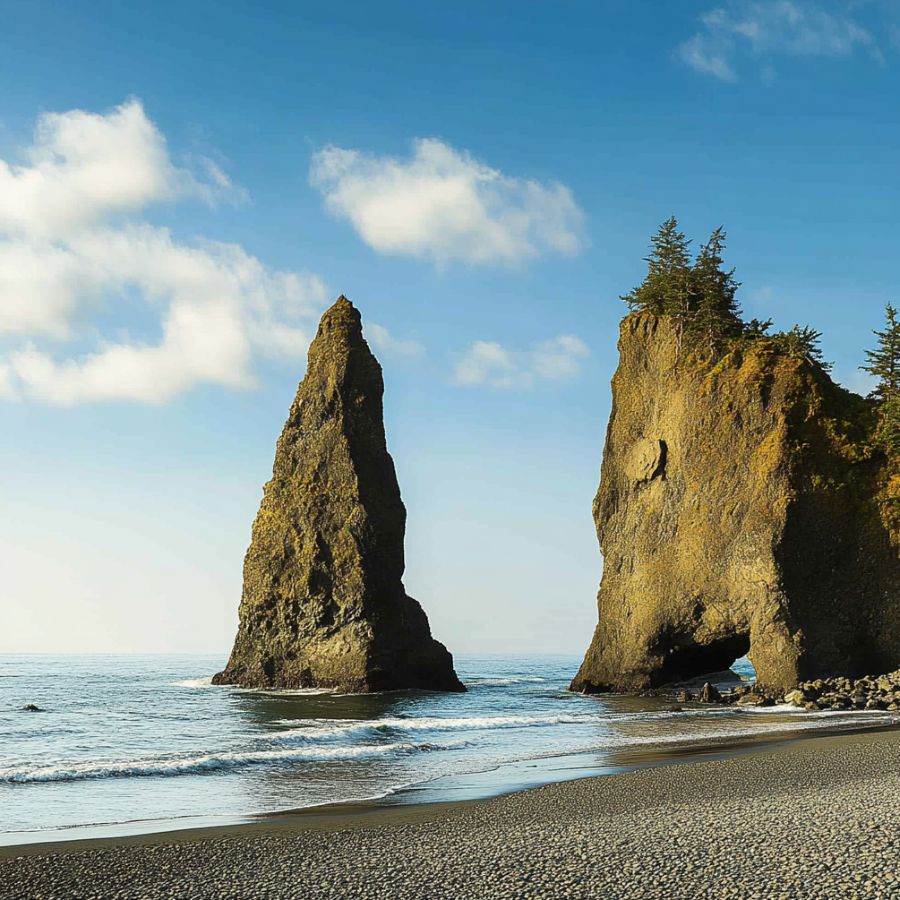
Ocean Shores is a coastal city on the Point Brown Peninsula in Grays Harbor County. It sits between the Pacific Ocean and Grays Harbor, featuring beautiful sandy beaches and dunes. The area has become a favorite spot for rockhounds looking for interesting minerals.
Labradorite can be found among the mineral-rich sands of Ocean Shores beaches. The best time to search is during low tide when more of the beach is exposed.
The beaches at Ocean Shores contain a mix of minerals, thanks to ocean currents that deposit materials along the shoreline. Besides labradorite, collectors might find jasper, agates, and even small pieces of jade.
Point Brown Placer is especially good for gemstone hunting. The constant action of waves helps uncover new stones regularly. Winter storms often refresh the beach, bringing new materials from the ocean floor to the surface.
Places Labradorite has been found by County
After discussing our top picks, we wanted to discuss the other places on our list. Below is a list of the additional locations along with a breakdown of each place by county.
| County | Location |
| Kittitas | Liberty Gold Mine |
| Okanogan | Stonewall Creek |
| Grays Harbor | Damon Point |
| Grays Harbor | Westport Beach |
| Lewis | Chehalis River |
| Grays Harbor | Humptulips River |
| Grays Harbor | Quinault River |
| Skagit | Blanchard Mountain |
| Skagit | Skagit River |
| Grant | Saddle Mountains |
| Benton | Horse Heaven Hills |
| Klickitat | Bickleton |
| Spokane | Mount Spokane |
| Klickitat | Columbia River |
| Yakima | Yakima River |

